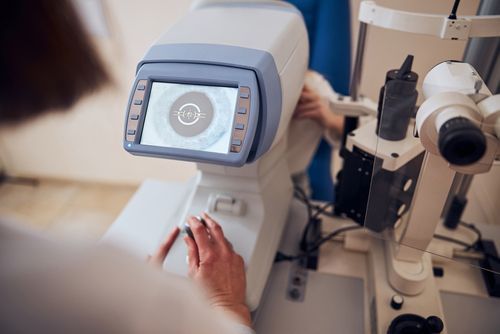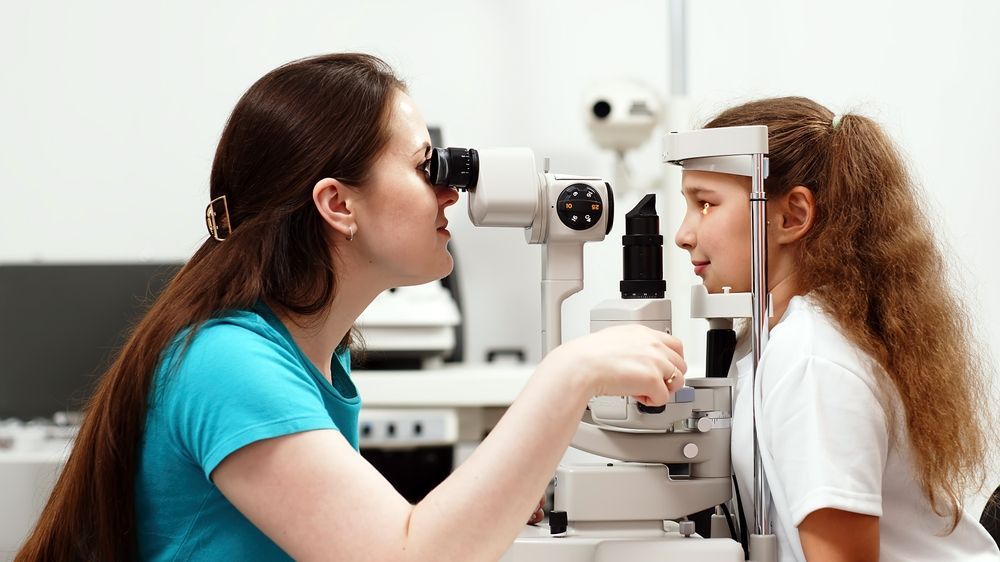My Child Has Myopia—Now What?

Trouble seeing the board at school, frequent squinting, complaints of headaches, a rising amount screen time—whatever prompted you to schedule an eye appointment for your child, it was clear: something was wrong. Next, you learn that your child has myopia or nearsightedness. What do you do now?
First, it’s important that you do something.
That may seem obvious, but it’s important to underscore here because that hasn’t always been the case with myopia. Myopia, more commonly known as nearsightedness, often meant glasses with continually higher prescriptions as the condition progressed and vision declined. CooperVision’s myopia simulator can give you glimpse of what that progression looks like through the eyes of a child. Perhaps that was even your own experience. Since then, the world’s understanding of myopia has developed, and the necessary technology alongside it. Now we can do something to slow the progression of myopia and we must.
Not only does slowing the progression of myopia help preserve your child’s vision, it keeps their eyes healthier and at less risk for serious eye conditions later on such as cataracts, glaucoma and retinal detachment, all conditions that can lead to visual impairment and even blindness.[i] Fortunately, you have options to support your child’s eye health and keep their future bright.
In our practice, we can walk you through myopia management options, including CooperVision’s Brilliant Futures™ Myopia Management Program with MiSight® 1 day contact lenses. Together, we can explore what will be the best fit for your child, their preferences and their lifestyle. We’re very excited that we’re certified to offer MiSight® 1 day, the first and only daily soft contact lens FDA approved* to slow the progression of myopia in children, aged 8-12 at the initiation of treatment†2. It’s a simple and safe solution that works for many lifestyles, as well as being proven to slow myopia progression by about 59% on average.†[ii] To top it off, research also tells us that compared to children in glasses, children in contact lenses report better quality of life, especially for recreational activities and their self-perceived appearance.[iii]
We believe that kids should grow stronger, but their nearsightedness shouldn’t. Call us at 302-609-0041 or email us at hello@cedarseevisioncenter.com to schedule a time for a conversation about myopia and your options to support your child’s eye health with Dr. Korley.
* Indications for use: MiSight® 1 day (omafilcon A) soft (hydrophilic) contact lenses for daily wear are indicated for the correction of myopic ametropia and for slowing the progression of myopia in children with non-diseased eyes, who at the initiation of treatment are 8-12 years of age and have a refraction of -0.75 to -4.00 diopters(spherical equivalent) with ≤ 0.75 diopters of astigmatism. The lens is to be discarded after each removal.
†Compared to a single vision lens over a 3-year period.
[i] Flitcroft DI. The complex interactions of retinal, optical and environmental factors in myopia aetiology. Prog Retin Eye Res. 2012;31:622-60.
[ii] Chamberlain P, et al. A 3-year randomized clinical trial of MiSight® lenses for myopia control. Optom Vis Sci. 2019; 96(8):556-67.
[iii] Rah MJ, et al. Vision specific quality of life of pediatric contact lens wearers. Optom Vis Sci2010;87(8):560-6.
QUICK LINKS
HELPFUL ARTICLES
Vision Therapy
Services
Contact Lenses
Eyeglasses
Eye Health
Surgical Procedures
Products
Eye Surgery Co-Management
Ocular Disease Management
Technology
All Eye Care Services
Keep In Touch












